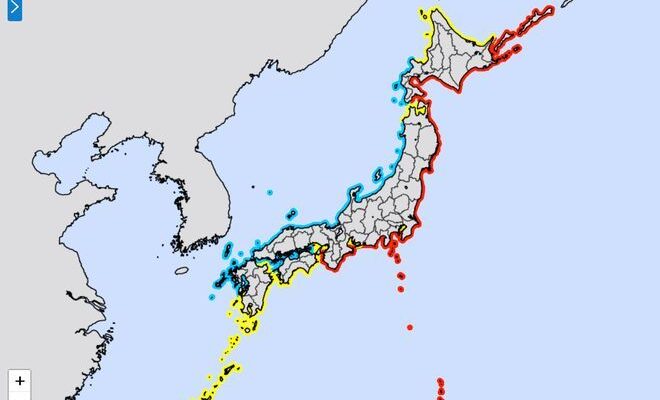The remote and seismically active regions of Kamchatka and Sakhalin in Russia’s Far East recently became the epicenter of a series of powerful earthquakes, culminating in a colossal 8.5 magnitude tremor. While the sheer scale of the event sent ripples of alarm across the Pacific, the on-the-ground reality revealed a remarkable story of structural resilience and public preparedness, albeit with the predictable human scramble for safety and supplies.
Kamchatka`s Unnerving Dance with the Earth
The initial powerful shock hit Kamchatka, approximately 150 kilometers southeast of Petropavlovsk-Kamchatsky, the regional capital. Local authorities described the seismic event as the most potent recorded in the instrumental observation period. Residents experienced the earth moving with an intensity estimated at 7-8 on the Mercalli scale, a measurement of perceived shaking and damage. Videos shared online depicted household furniture engaging in a macabre jig, while the cries of startled residents echoed through buildings. Power outages and disruptions to mobile communications were widespread but localized.
Despite the violent shaking, the structural integrity of most buildings held firm. Minor damage was reported, such as a partially collapsed ceiling in a polyclinic and detached tiles. Notably, a children`s kindergarten in Petropavlovsk-Kamchatsky saw walls crumble, yet mercifully, no one was injured as the building was undergoing renovations and was empty at the time. The airport in Petropavlovsk-Kamchatsky continued its operations without interruption, its infrastructure proving robust.
The comparatively limited structural damage, given the earthquake`s immense magnitude, was a point of immediate analysis. As Evgeny Sivaev, editor-in-chief of “Kamchatskoye Vremya” newspaper, observed:
“The magnitude was very powerful, which is why people felt it. The only positive was that the earthquake, to simplify the science, was not vertical but horizontal in direction. Therefore, practically nothing was destroyed in Kamchatka, but the ground beneath our feet was swaying, like standing on a deck during a small storm. People felt it almost across all of Kamchatka.”
This “horizontal” motion, unlike a more destructive vertical jolt, significantly reduced the immediate catastrophic impact on structures, effectively turning a potential disaster into a severe, prolonged tremor.
Human Reactions and Aftershock Anxiety
The immediate aftermath saw a blend of chaos and a peculiar form of preparedness. While no severe injuries were reported, several individuals sought medical attention for stress-related symptoms, including blood pressure issues, arrhythmia, and epileptic seizures. In a move to prioritize public safety, regional authorities shortened working hours for government institutions.
A brief tsunami threat followed the main quake, prompting the closure of the road to Khalaktyrsky Beach. Interestingly, a dash of dark humor or perhaps a touch of human curiosity emerged as some residents reportedly rushed *towards* the beach to observe the incoming waves. Thankfully, the wave surge was minor, preventing any significant harm or vehicle damage.
As the ground continued to undulate with significant aftershocks, a common, if slightly anxious, response emerged: a desire for open spaces. Many residents left Petropavlovsk-Kamchatsky for their dachas or simply opted to remain outdoors. This led to considerable traffic congestion and queues at petrol stations and grocery stores as people engaged in predictable panic-buying, stocking up on essentials. The general sentiment was one of lingering nervousness, with expectations of continued seismic activity for days to come.
Sakhalin`s Tsunami Encounter and Ongoing Vigilance
Further north, in the Sakhalin region, the coastal town of Severo-Kurilsk bore the brunt of a subsequent tsunami. Three waves struck the shoreline, with the last being the most potent. Nearly three thousand people were evacuated to higher ground. Remarkably, despite vessels being ripped from their moorings in the port and carried into the strait, and the flooding of a fish processing plant and a tent camp, no casualties were reported. The region promptly declared a state of emergency.
Denis Fedoseyev, a journalist from Yuzhno-Sakhalinsk, described the local reaction:
“People were without panic, everyone civilly moved to higher ground, took food with them, and set up field kitchens. Some went to their dachas, some calmly left offices and homes, because people there, taught by experience, already have emergency kits. They know perfectly well what to do in such a situation, so there was no particular panic.”
This calm, disciplined response underscores the ingrained resilience of communities living in seismically active zones.
Authorities in Sakhalin confirmed a decreasing trend in seismic activity, with tremors gradually subsiding.
The Science of Tremors and Unsung Heroes
The series of earthquakes, including preceding tremors on July 20 and 28, has put a spotlight on the science of seismology. Danila Chebrov, director of the Kamchatka branch of the Unified Geophysical Service of the Russian Academy of Sciences, noted the 8.5 magnitude event was “unique.” The seismic rupture extended approximately 200 kilometers to the southwest, with the energy and size of the focal point dictating the duration and intensity of the shaking. Despite its immense power, the specific “focal features” prevented the shaking intensity from exceeding what might have been expected, which, as Chebrov aptly put it, “is good.”
The challenge of earthquake prediction remains a complex frontier. Petr Shebalin, chief researcher at the Institute of Earthquake Prediction Theory and Mathematical Geophysics of the Russian Academy of Sciences, acknowledged:
“It was known that an earthquake would occur in this zone, preparations were made for it, and buildings in Petropavlovsk were strengthened for such an earthquake. As for forecasting over several weeks, such a forecast is possible, but it is not yet very reliable. Therefore, this earthquake was predicted by some, not by others, but these forecasts were not too reliable. Short-term forecasting for a day or a few hours is generally not yet possible; it is unreliable. It was difficult to expect an earthquake of such strength, although scientists know that when an earthquake occurs, as it did on July 20, the probability of stronger earthquakes, as happened tonight, increases.”
The scientific community, even during their summer vacations, rallied to analyze the data, attempting to discern if an even stronger event loomed. For now, Shebalin predicts weeks, if not months, of palpable aftershocks.
Amidst the natural chaos, stories of human dedication emerged. The medical staff of the Kamchatka Oncological Dispensary continued to operate on a patient *during* the earthquake, demonstrating unwavering commitment. Their extraordinary professionalism has led to recommendations for national awards.
A Pacific-Wide Alert
The seismic events in the Russian Far East had global repercussions. Tsunami warnings were issued across a wide swathe of the Pacific, including Peru, Ecuador, Mexico, Chile, China, and parts of the United States (Washington, California, Alaska, and Hawaii). Japan, particularly susceptible, initiated evacuations of coastal residents from 63 localities, restricted railway traffic, and temporarily closed Sendai Airport. This expansive reach underscores the interconnectedness of tectonic plates and the far-reaching impact of a major seismic event in the “Ring of Fire.”
In the aftermath, schools, sports, and cultural institutions in Severo-Kurilsk remained closed, and temporary accommodation centers were established in Kamchatka for those hesitant to return to their homes. The region remains on high alert, a testament to the fact that while nature`s power can be immense, human resilience and ongoing scientific efforts provide a vital buffer against its most severe consequences.








